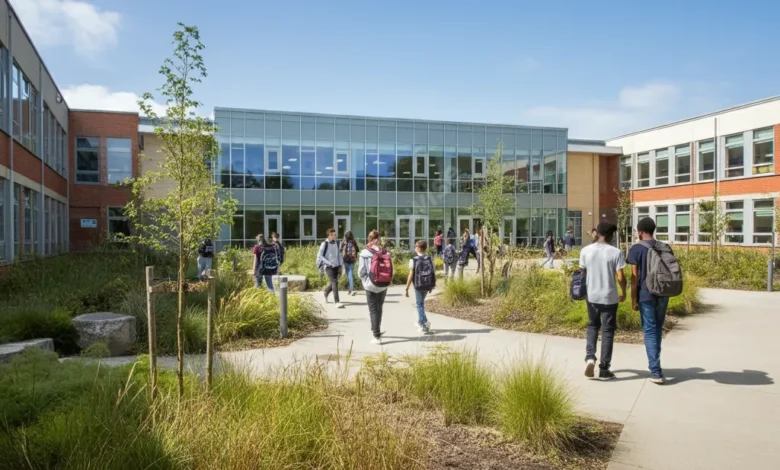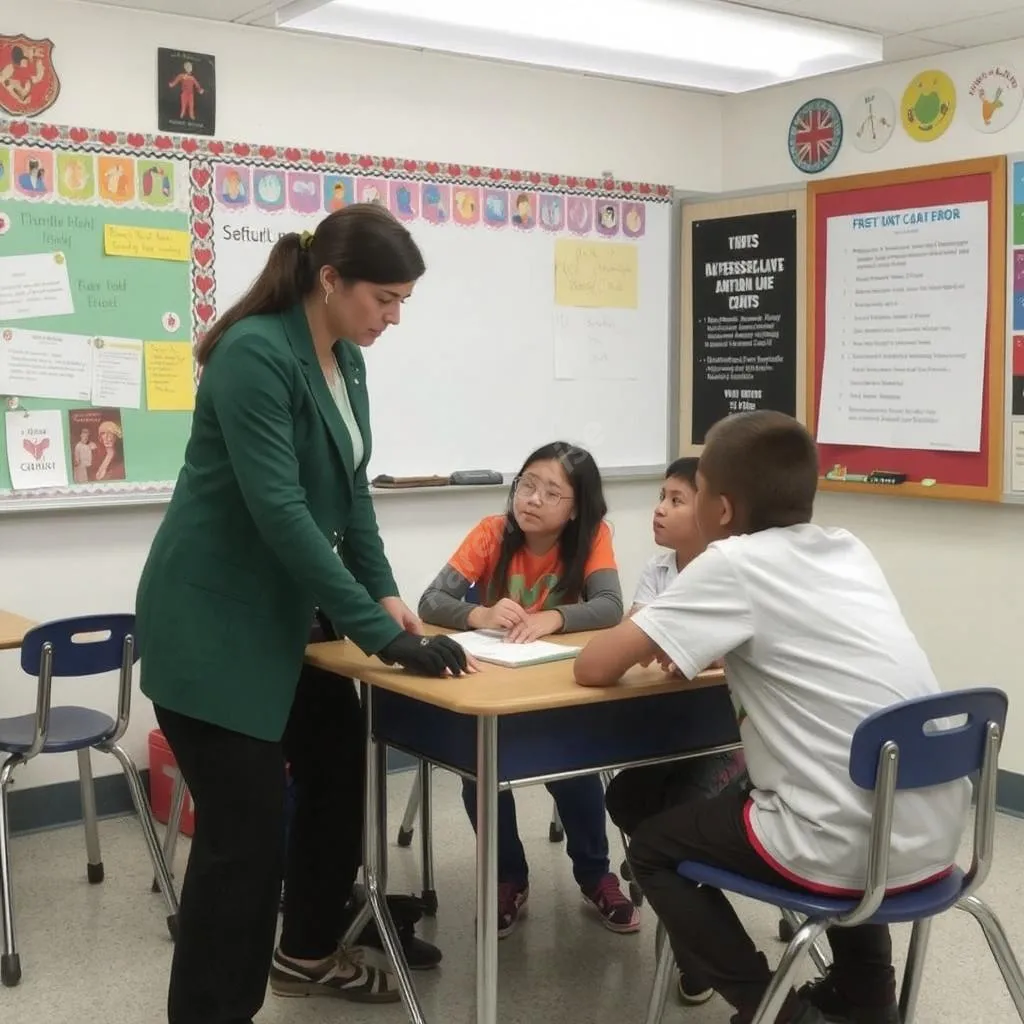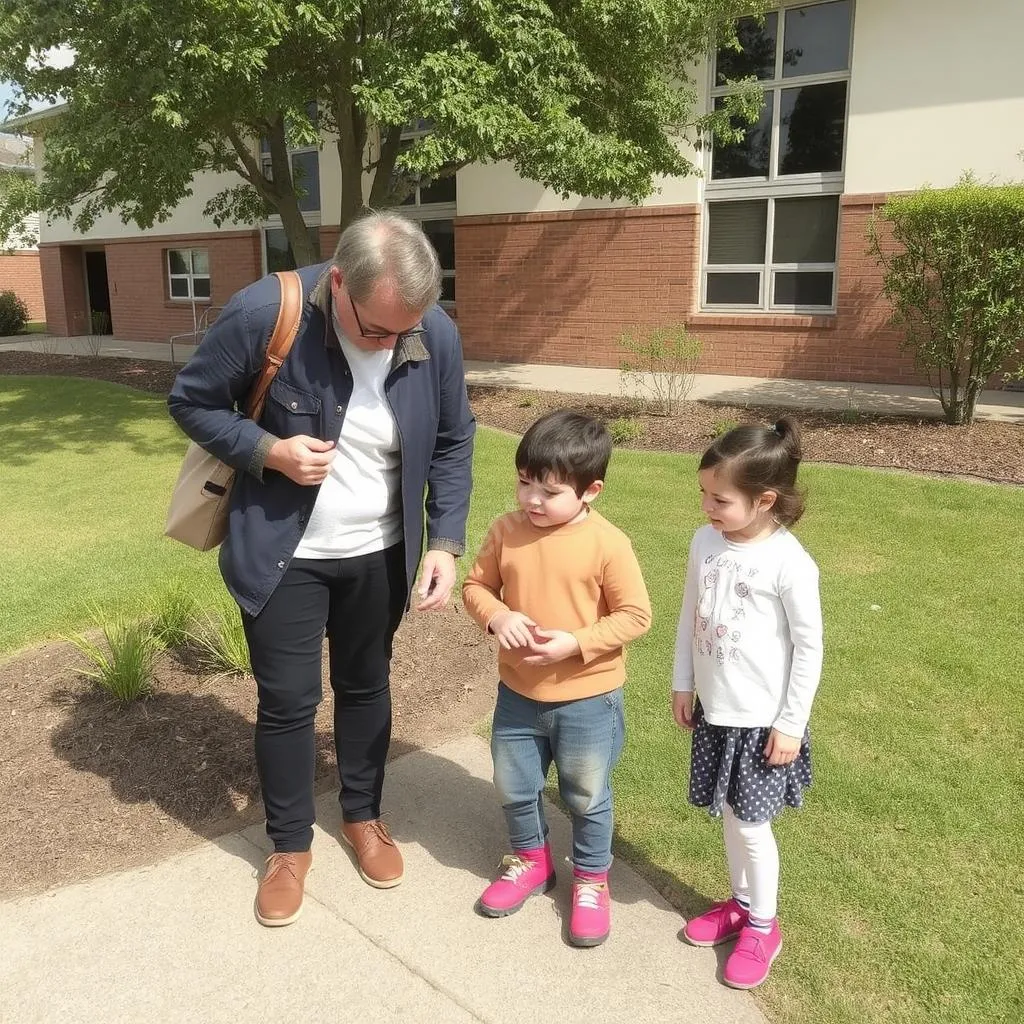The School Ecosystem Model: Beyond Academics

Here’s a surprising fact for parents. Your child will spend over 15,000 hours in school before graduation. This is more than any other activity except sleeping. Most parents look only at academic rankings when choosing schools. But this approach misses many crucial factors.
A school is much more than just classrooms and test scores. Think of it as a living ecosystem that shapes your child’s growth. Every part of this system matters for their development. The way students interact with each other creates social patterns. Physical spaces influence how children learn and play. Support systems help students overcome challenges. All these elements work together to create a holistic learning environment.
Many parents don’t know how to evaluate these different aspects of a school. They might miss important signs of a healthy school environment. This guide will help you understand the school ecosystem model in detail. You’ll learn practical ways to assess different schools. We’ll show you what makes a truly nurturing educational space. Most importantly, you’ll discover how to choose the best environment for your child’s unique needs.
Understanding the School Ecosystem Model
Every school has its own unique personality and system. The school ecosystem model helps us understand these complex systems better. Let’s break down what this really means for your child’s education.
A school ecosystem includes every aspect that affects student learning and growth. Think of it like a garden that needs multiple elements to thrive. Good soil alone isn’t enough. Plants also need proper sunlight, water, and care. Similarly, your child needs more than just good teachers and textbooks.
Key Components of the School Ecosystem:
The model focuses on four main areas that work together:
Social Environment
- How students interact with each other
- School culture and community spirit
- Inclusion practices and diversity
Physical Spaces
- Classroom layout and design
- Play areas and sports facilities
- Safety features and accessibility
Support Systems
- Counseling services
- Health and wellness programs
- Special education resources
Learning Approaches
- Teaching methods
- Technology integration
- Extra-curricular activities
Why This Model Matters
Your child’s success depends on more than just academics. Research shows that students learn better in positive environments. A Harvard Education Study found that supportive school environments improve:
- Student motivation
- Academic performance
- Social-emotional development
- Long-term success
Different From Traditional Evaluation
Most school ratings focus only on test scores and grades. The ecosystem model looks at the bigger picture. It helps you understand how different parts of school life connect. This approach gives you a clearer view of what your child will experience.
A balanced school ecosystem supports every aspect of child development. It creates opportunities for both academic and personal growth. Your child needs this complete support system to reach their full potential.
Core Components of a School Ecosystem
A. Social Environment
The social environment shapes how your child experiences school each day. It’s about more than just making friends. A positive social setting helps students feel safe, accepted, and motivated to learn.

Student Interaction Patterns
Students interact in many different ways throughout the school day. Here’s what to look for:
- Structured Interactions:
- Group projects in class
- Team sports activities
- Organized club meetings
- Peer tutoring programs
- Natural Social Times:
- Lunch breaks
- Recess periods
- Before and after school
- Between classes
Good schools create spaces for both types of interaction. They help students build strong social skills. Your child needs chances to work with different classmates. This helps them learn to collaborate effectively.
Diversity and Inclusion Practices
A healthy school environment welcomes all students. Look for these key elements:
- Cultural celebration events
- Mixed-ability learning groups
- Multi-language support
- Anti-bullying programs
- Inclusive sports and activities
Schools should actively teach students about respect. They need clear policies against discrimination. Ask how they handle conflicts between students. Good programs help children understand and value differences.
School Culture and Community Building
Strong school communities don’t happen by accident. They need careful planning. Here’s what effective schools do:
Regular Community Activities:
- Monthly assembly programs
- Family event nights
- Student-led presentations
- Class performances
- School spirit weeks
Building Connections:
- Buddy systems for new students
- Cross-grade mentoring
- Parent volunteer opportunities
- Community service projects
The best schools create a sense of belonging. Every student should feel like an important part of the community. Watch how students and teachers interact during your school visit. Happy, engaged students often mean a healthy social environment.
B. Physical Environment
The physical space of a school directly affects how students learn and feel. Every corner of the campus should support education and well-being. Let’s explore what makes a good physical environment.
Campus Layout and Facilities
A well-designed school campus helps students stay focused and comfortable. Here’s what parents should check:
Essential Learning Spaces:
- Bright, well-ventilated classrooms
- Modern science laboratories
- Updated computer labs
- Quiet study areas
- Library resources
Physical Activity Areas:
- Age-appropriate playgrounds
- Indoor sports facilities
- Outdoor sports fields
- Exercise equipment
- Movement spaces
Safety Measures
Student safety should be the top priority of every school. Look for these important features:
Basic Safety Elements:
- Secure entrance points
- Visitor check-in system
- Emergency exit plans
- First aid stations
- Security cameras
Health and Hygiene:
- Clean restrooms
- Hand washing stations
- Proper ventilation
- Regular cleaning schedule
- Safe drinking water
Learning Spaces and Flexibility
Modern education needs flexible spaces that can change with learning needs. Good schools offer:
Adaptable Classrooms:
- Movable furniture
- Different seating options
- Group work areas
- Individual study spots
- Technology integration
Special Purpose Areas:
- Art studios
- Music rooms
- Theater spaces
- STEM workshops
- Quiet zones
Remember these key points about physical environments:
- Spaces should match your child’s age and needs
- Look for clean, well-maintained facilities
- Check if areas support different learning styles
- Notice if students seem comfortable in their spaces
A good physical environment makes learning easier. It helps students stay healthy and focused. Your child will spend many hours in these spaces. Make sure they support both learning and comfort.
C. Support Systems
Every child needs different types of support at school. Strong support systems help all students succeed. They catch problems early and provide needed help.
Student Counseling and Guidance
Good schools offer comprehensive counseling services. Here’s what effective support looks like:
Academic Support:
- Regular progress checks
- Study skill workshops
- Learning style assessments
- College preparation help
- Career guidance
Social-Emotional Support:
- Individual counseling
- Group support sessions
- Conflict resolution help
- Stress management tools
- Friendship building skills

Special Education Resources
Schools must support students with different learning needs. Look for these important services:
Key Support Features:
| Service Type | What to Look For |
|---|---|
| Learning Support | Specialized teachers, Modified materials |
| Speech Therapy | Regular sessions, Progress tracking |
| Behavioral Support | Clear plans, Trained staff |
| Physical Therapy | Accessible spaces, Qualified therapists |
| Reading Help | Extra practice time, Proven programs |
Health and Wellness Facilities
Student wellness affects learning success. Quality schools provide:
Basic Health Services:
- School nurse on duty
- First aid training
- Health screenings
- Medication management
- Emergency response plans
Wellness Programs:
- Mental health awareness
- Nutrition education
- Physical activity breaks
- Stress relief activities
- Sleep hygiene tips
Remember these points about support systems:
- Ask about staff qualifications
- Check response times for help
- Look for preventive programs
- Notice how they handle different needs
Good support systems create a safety net for students. They help every child reach their potential. Your child should feel comfortable asking for help when needed.
D. Extra-Curricular Integration
Extra-curricular activities are not just fun additions to school life. They help build important life skills. These programs should connect naturally with daily learning.
Sports Programs
Physical activity helps students stay healthy and focused. Good sports programs offer:
Team Sports Options:
- Age-appropriate teams
- Different skill levels
- Professional coaching
- Regular practice times
- Fair play opportunities
Individual Sports Choices:
- Track and field
- Swimming
- Tennis
- Gymnastics
- Martial arts
Arts and Cultural Activities
Creative expression is vital for child development. Look for schools that provide:
Visual Arts:
- Art classes
- Photography clubs
- Digital design work
- School exhibitions
- Student galleries
Performing Arts:
- Music programs
- Drama clubs
- Dance classes
- School concerts
- Theater productions
Clubs and Student Organizations
Good schools offer various interest-based activities. These help students discover new passions.
Popular Club Types:
- Science and technology
- Environmental projects
- Language learning
- Book clubs
- Chess teams
Leadership Opportunities:
- Student council
- Debate team
- School newspaper
- Community service
- Peer mentoring
Important things to consider about extra-curricular programs:
- Activities should fit different interests
- Programs need proper supervision
- Time management should be reasonable
- Costs should be affordable
- Everyone should have access
Benefits of strong extra-curricular programs:
- Build new friendships
- Develop special talents
- Learn teamwork skills
- Boost confidence
- Create memorable experiences
The Human Element
A. Teacher-Student Dynamics
The connection between teachers and students shapes daily learning experiences. Strong relationships help students feel confident and motivated.
Class Sizes and Individual Attention
Small details make a big difference in classroom dynamics:
- Number of students per class
- Time for one-on-one help
- Personal feedback opportunities
- Special attention moments
- Individual progress tracking

The best class sizes depend on your child’s needs. Most experts suggest:
| Grade Level | Ideal Class Size |
|---|---|
| Preschool | 12-15 students |
| Elementary | 15-20 students |
| Middle School | 20-25 students |
| High School | 20-25 students |
Teaching Styles and Approaches
Good teachers use different methods to help every student learn. Look for:
Effective Teaching Methods:
- Interactive lessons
- Hands-on activities
- Group discussions
- Visual learning tools
- Movement-based learning
Student Support:
- Extra help sessions
- Learning style matching
- Positive reinforcement
- Clear expectations
- Regular encouragement
Communication Channels
Open communication helps everyone work together. Schools should offer:
Regular Updates Through:
- Weekly newsletters
- Online portals
- Progress reports
- Email updates
- Phone calls
Meeting Opportunities:
- Parent-teacher conferences
- Open house events
- Virtual meetings
- Quick check-ins
- Emergency contacts
Good teacher-student relationships show these signs:
- Students ask questions freely
- Teachers know each child
- Positive classroom atmosphere
- Active student participation
- Mutual respect
B. Parent Involvement Opportunities
When parents become active members of the school ecosystem, everyone benefits. Your involvement can make a real difference in your child’s education. Let’s explore the different ways schools should welcome and support parent participation.
Parent-Teacher Collaboration
Strong partnerships between parents and teachers create the best learning environment for children. Regular communication forms the foundation of this partnership. Schools should provide clear, accessible ways for parents to stay informed and involved.
Most effective schools use a mix of communication methods. They send monthly newsletters about school events and achievements. Digital updates keep parents informed about daily activities. Regular progress meetings help you understand your child’s growth.
Schools should also invite parents to participate in important decisions. This might include:
- Joining the school board
- Participating in policy committees
- Contributing to curriculum discussions
These opportunities help parents understand and shape their children’s education. Your voice matters in creating a better learning environment.
Community Engagement Programs
Building a strong school community takes more than just classes and homework. Schools need to create opportunities for families to connect and learn together. These connections help create a supportive environment for all students.
The best schools organize regular family events throughout the year. Cultural celebrations bring diverse families together. Science fairs showcase student achievements. Art shows and sports days create memorable experiences for everyone.
Many schools also offer learning opportunities for parents. These might include:
- Workshops about child development
- Family reading nights
- Technology training sessions
These programs help parents better support their children’s learning at home. They also create bonds between school families.
Volunteer Opportunities
Your time and talents can enrich the school community in many ways. Good schools make it easy for busy parents to help. They offer flexible schedules and various ways to contribute.
Classroom volunteers make a direct impact on student learning. You might help with:
- Reading groups
- Art projects
- Science experiments
These experiences let you see how your child learns. They also help teachers give more attention to each student.
School-wide volunteering creates a better environment for everyone. Libraries need help organizing books. School gardens need maintenance. Special events need planning teams. Every contribution matters, no matter how small.
Remember that parent involvement looks different for each family. Some parents can volunteer weekly. Others might only manage occasional help. The key is finding ways to stay connected that work for your schedule.
Good schools welcome all levels of involvement. They understand that working parents need flexible options. They make it easy to stay informed and involved, even from a distance.
Evaluating a School’s Ecosystem
Finding the right school means looking beyond just test scores. You need to evaluate how well all parts of the school ecosystem work together. Here’s a practical guide to help you make this important decision.
Key Questions During School Visits
When you visit potential schools, ask thoughtful questions about daily life there. Your tour guide should give clear, confident answers. Pay attention to both what they say and what you observe.
Start by asking about the school’s learning approach. How do they help different types of learners? Watch how teachers interact with students during your visit. Notice if children seem engaged and happy in their classrooms.

Important areas to investigate include:
- Teaching methods and class sizes
- Support services for struggling students
- Handling of conflicts between students
- Communication with parents
- Safety procedures and supervision
Red Flags to Watch For
Sometimes small signs can reveal bigger problems. Trust your instincts if something doesn’t feel right. Here are some warning signals that need closer attention:
High teacher turnover often means unhappy staff. Ask how long teachers typically stay at the school. Watch how staff members interact with each other and with students.
Poor maintenance might indicate budget problems. Look for:
- Clean, well-kept facilities
- Working equipment
- Updated learning materials
- Safe playground equipment
- Regular cleaning schedules
Negative student behavior during your visit needs explanation. Ask about:
- Discipline policies
- Bullying prevention
- Conflict resolution
- Student support systems
Signs of a Healthy School Ecosystem
A thriving school shows positive signs in many areas. Here’s what to look for:
Positive Learning Environment:
Students should appear engaged and comfortable. You’ll see active participation in classes. Teachers will show enthusiasm for their work. Look for student work displayed proudly on walls.
Strong Community Spirit:
Notice how people greet each other in hallways. Watch for signs of collaboration between classes. Check if older students help younger ones. These small interactions tell you a lot about school culture.
Effective Communication:
Good schools share information clearly and often. They should explain:
- Their teaching philosophy
- Behavior expectations
- Parent involvement options
- Academic support systems
- Emergency procedures
Remember that every school has its own personality. The best choice matches your child’s needs and your family’s values. Take time to observe these details during your visit.
Impact on Student Development
A well-functioning school ecosystem shapes your child’s growth in many ways. Understanding these effects helps you make better school choices. Let’s explore how a good school environment influences student development.
Short-term Benefits
Daily life in a positive school environment brings immediate advantages for students. Children who feel safe and supported at school show better focus in class. They make friends more easily and enjoy learning new things.
Recent studies show that students in supportive schools have:
- Less test anxiety
- Better attendance records
- Stronger peer relationships
- Higher class participation
- Improved homework completion
These early wins build confidence. Your child develops good habits that make learning easier. They’re more likely to ask for help when needed.
Long-term Advantages
The benefits of a good school ecosystem last far beyond graduation. Students develop important life skills that help them succeed later. Research from education experts shows impressive results.
Students from strong school environments often show:
- Better problem-solving abilities
- Stronger leadership skills
- Higher college acceptance rates
- Greater career readiness
- More community involvement
These advantages come from daily exposure to positive influences. Good schools teach more than just facts and figures. They help students develop lasting confidence and capabilities.
Real-Life Success Stories
Let’s look at how real students benefited from positive school environments. These examples show the power of a good school ecosystem.
Sarah’s Story:
Sarah struggled with reading in her old school. After moving to a school with strong support systems, things changed. Small reading groups helped her catch up. Now she leads her school’s book club.
Miguel’s Experience:
Miguel was shy and worried about making friends. His new school’s buddy system paired him with a welcoming classmate. Today, he helps other new students adjust. He’s also started a cultural exchange club.
Emma’s Journey:
Emma’s interest in science grew thanks to her school’s hands-on learning approach. Teachers encouraged her curiosity. She now runs experiments in the school’s science fair. Her project won a regional competition.
These stories show how good school environments help students:
- Overcome challenges
- Discover their talents
- Build confidence
- Help others succeed
- Achieve their goals
Remember that each child’s path is unique. The right school environment helps them find their own way to success.
Making Your Decision
Choosing the right school is a big decision. You need to consider many factors in the school ecosystem. Let’s break down this process into manageable steps.
Assessment Worksheet Guide
Start by creating a detailed evaluation of each school you visit. This helps you compare options fairly. Focus on what matters most for your child’s specific needs.
Here’s how to rate different aspects of each school:
Core Areas to Evaluate:
Rate each area from 1-5 (5 being excellent)
- Teaching quality and methods
- Support services availability
- Social environment
- Physical facilities
- Parent communication
- Extra-curricular options

Add notes about specific observations. Write down both positive and negative points. Your detailed notes will help you remember each school clearly later.
Balancing Different Aspects
Every school has strengths and weaknesses. The key is finding the right balance for your child. Think about your child’s personality and learning style.
Consider these important trade-offs:
- Large school variety vs. small school attention
- Structured programs vs. flexible learning
- Academic focus vs. creative opportunities
- Sports emphasis vs. arts programs
- Traditional methods vs. modern approaches
Remember that perfect schools don’t exist. Look for a good match with your most important priorities. Focus on the elements that will help your child thrive.
Tips for Final Decision-Making
Making the final choice can feel overwhelming. Here’s a practical approach to reach your decision:
Trust Your Research
Review your notes carefully. Look for patterns in your observations. Pay attention to how your child responded during school visits. Their comfort level matters greatly.
Consider Practical Factors:
Think about these daily life aspects:
- Distance from home
- Transportation options
- Before/after school care
- Cost and financial aid
- Schedule flexibility
Listen to Your Instincts
Your gut feeling about a school often tells you something important. If something doesn’t feel right, dig deeper to understand why.
Involve Your Child
Ask for your child’s opinion about each school. While you make the final decision, their input helps ensure a smooth transition. Watch how they react in each school environment.
Plan for Success
Once you choose a school, prepare for a good start:
- Attend orientation events
- Meet teachers early
- Join parent groups
- Learn school routines
- Set up support systems
Remember that good schools welcome questions. Don’t hesitate to ask for more information before deciding.
Conclusion
Choosing the right school shapes your child’s future. Understanding the school ecosystem model helps you make this important decision wisely. Let’s review the key points that matter most.
Think of a school as a complete environment for your child’s growth. Good test scores matter. But a truly excellent school offers much more. It provides a balanced mix of academic, social, and personal development opportunities.
Key Points to Remember:
The best schools show strength in several areas:
- Supportive social environments
- Well-maintained facilities
- Strong teaching teams
- Active parent communities
- Clear communication systems
Your next steps should include:
- Visit multiple schools
- Ask detailed questions
- Observe daily activities
- Talk with current parents
- Include your child in visits
Remember that every child is unique. The perfect school for one student might not suit another. Trust your knowledge of your child’s needs. Use the school ecosystem model as your guide to finding the right fit.
Your careful attention to these details will help your child thrive. A good school choice creates opportunities for success. It builds confidence and supports healthy development.

